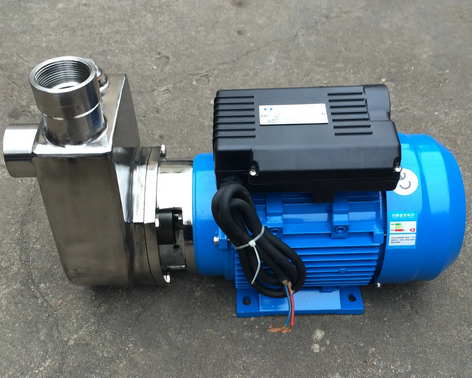Reasons why small self-priming pumps cannot suck water
The reasons why a small self-priming pump cannot absorb water may involve many aspects. The following are some common reasons and their analysis:
Water pipe problem:
Water pipe is too long: The suction range is too high or the suction pipe is too long, which may cause difficulty in absorbing water, because the long pipe will increase the water flow resistance and pressure loss.
Water inlet pipe leakage: If there is a leak in the water inlet pipe, air will enter the pipe, which will affect the water absorption capacity of the self-priming pump.
Pipe blockage: The pump body or the inlet pipe filter is blocked by foreign matter, which will also hinder the water flow into the pump body.
Pump body and sealing problems:
Poor sealing performance: Long-term use may cause wear or corrosion at the pump body seal, resulting in water leakage, affecting the sealing performance of the self-priming pump.
Mechanical seal damage: The mechanical seal is a key component to prevent internal leakage of the pump body. If it is damaged, it will directly cause the pump body to be unable to absorb water.
Voltage problem:
Voltage is too low: If the power supply voltage is lower than the rated voltage of the self-priming pump, the motor speed will drop, thereby affecting the water absorption capacity of the self-priming pump.
Liquid storage problem:
No liquid storage or insufficient liquid storage: Before the self-priming pump works, it is necessary to ensure that there is a certain amount of liquid in the pump to form the necessary vacuum to absorb water. If the liquid storage is not added or the liquid storage is insufficient, the self-priming pump will not work properly.
Other factors:
Pump body failure: Such as pump shaft bending, impeller damage, etc., may also cause the self-priming pump to fail to work properly.
Water quality problem: If the water contains a large amount of impurities or particulate matter, it may also affect the water absorption effect of the self-priming pump.
For the above reasons, the following solutions can be taken:
Check and adjust the water pipe: shorten the length of the water pipe, repair the leak, clean up the blockage, etc.
Check and repair the pump body and seal: replace the damaged mechanical seal, repair the seal, etc.
Adjust the voltage: Ensure that the power supply voltage meets the rated voltage requirements of the self-priming pump.
Ensure sufficient liquid storage: Before the self-priming pump works, ensure that there is enough liquid in the pump.
Check the condition of the pump body: If a pump body failure is found, it should be repaired or replaced in time.





